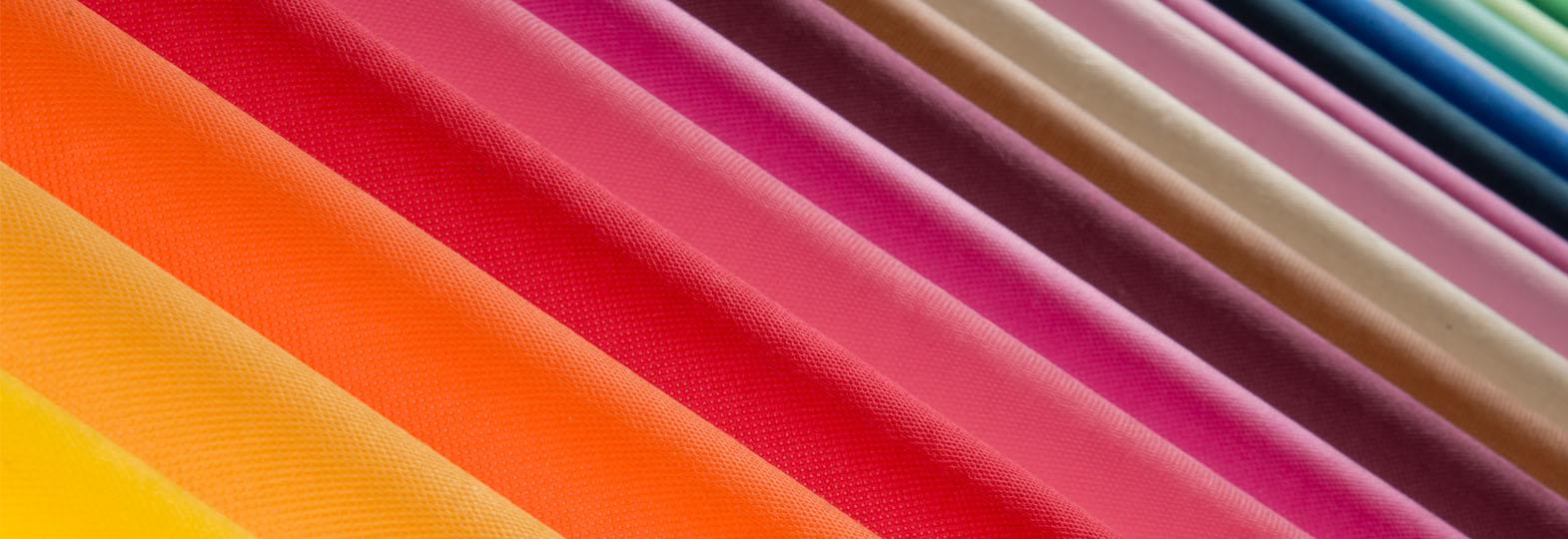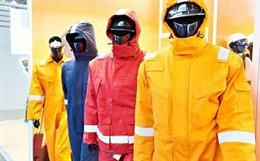Nonwoven textiles are a core element of humanity’s past. They are also one of the materials that will create its future. As technology evolves, so do nonwovens, and the world of these textiles is forever expanding. Some of the industries that rely on nonwovens may be surprising.
The very first fabrics humanity created were nonwoven textiles. Archaeological evidence for felt dates back to 6500 BCE, predating woven and knitted fibres by many centuries. Because they are made directly from fibres, nonwoven textiles are much faster and easier to make than knitted or woven ones. The age of the technology, however, doesn’t mean that there is no innovation in the world of nonwovens.
In the twenty-first century, nonwovens are among the most widely used textiles on the planet. It is because they are not just part of the world of fashion, and their modern uses go far beyond clothing and crafts. Not only are they easy to adapt to different utilities, but they are also resilient and can provide enhanced protection against liquids and even resist the growth of microorganisms. Here are a few industries that use nonwoven textiles, and some of the more offbeat ways these industries use them.
Medical
The absorbency and bacterial resistance of nonwoven textiles has meant that people have been creating bandages, medical gowns, sutures and surgical dressings from them since before World War II. Many nonwovens have the additional advantage of being disposable, suiting them well to single-use and sterile applications. However, the medical industry has gone well beyond these.
Over the last decade, one of the most promising developments in the world of nonwoven textiles is called Biofelt, which was first developed by Biomechanical Structures. The material is engineered to slowly dissolve inside a human body and to maximise tissue in-growth as it disappears. Thus, it provides a form of fibrous “scaffolding” that can act as a base for orthopaedic and tissue implants. Knitted and woven textiles cannot reach this standard of porosity or sterility, making nonwovens the material of choice for these applications.
There is another utility of nonwovens that has become prominent in recent years. Most single-use face masks and respirators are made from nonwoven textiles, due to the materials’ absorbency and thickness. Doctors, anaesthesiologists and nurses have been using surgical masks to reduce the chance of patient infections for many decades, and the ability to add antimicrobials to the fibre makes nonwovens an even clearer choice for surgical utilities.
Nonwoven textiles have another hidden utility: because they are so easy to imbue with specific chemicals, they are an ideal medium for transdermal drug delivery. These patches are completely non-invasive and painless, allowing for easy administration of a variety of drugs (including anaesthetics, contraceptives and even anti-Alzheimer’s medication).
Personal Hygiene
Because nonwoven textiles are inexpensive, absorbent and well-suited to single-use functions, one of their most common utilities is in personal hygiene products. Menstrual pads and tampons are some of the most common among these. People in the United States alone dispose of 12 billion disposable pads and 7 billion tampons every year1, and the people who use them will use approximately 11,400 pads or tampons during their lifetime.2 More durable solutions such as reusable pads, period underwear and menstrual cups require regular access to clean water, which is limited in many parts of the world.
Disposable tampons and pads are nearly always made from nonwoven textiles of some kind. Historically, this has been a combination of materials, including wood pulp, polymers and resins. The ability to manufacture nonwoven textiles cheaply and in bulk make them highly valuable, but also detrimental to the environment. That’s why many companies have developed replacements made from biodegradable nonwovens, such as organic cotton and unbleached bamboo.
Another application of nonwoven textiles in personal hygiene is more cosmetic in nature. Many people around the world use disposable wax strips to remove their body hair. Traditionally, these strips have been made of paper, and most of the time this paper is in the form of a strip of nonwoven paper or fabric. The absorbency, breathability and tensile strength of this material makes it ideal for this use case. Even better, the nonwoven nature of these strips allows them to be made using hypoallergenic materials.
Other nonwoven textiles used in the beauty industry include moisturising and brightening facial masks, cotton makeup remover pads and the disposable hair bands that spas use to keep their clients’ hair out of the way.
Agriculture and Horticulture
People have been growing food for nearly as long as humanity has existed, and farmers are eternally searching for ways to optimise their efficiency and their yield. People with food or flower gardens reap these benefits in turn. One of these optimisations comes from a United States religious group called the Shakers: in the late 18th century and early 19th century, they stuck their excess seeds on paper. Gardeners and farmers could place these “seed sheets” under the soil, simplifying the planting process.
In modern times, these seed strips are often made from nonwoven textiles. They are often made from recycled paper, but nonwoven textiles made from wood pulp and recycled cotton are becoming increasingly common. Even many modern farms use seed strips on hills and other areas where planting machines don’t work effectively.
On a similar note, farmers around the world take measures to grow only the plants they want to grow. One of the most common ways to prevent weeds from sprouting between their intended plants is with soil coverings, and nonwoven textiles are growing increasingly common for this utility. Generally, the farmer will cut small openings in the ground cover where the seeds are planted, allowing crops to penetrate while weeds cannot break through. These nonwoven textiles allow water to flow through easily, as well. Many farmers also treat these textiles against common insects, bacteria and fungal growth.
This utility is not limited to farming and gardening, either. Habitat reclamation and “rewilding” are essential elements of restoring natural areas that have been damaged by human activity. The more efficient these efforts are, the greater the impact on the environment, and groups like the Wild Seed Project in the United States recommend using nonwoven sheets of native seeds to maximise that impact.
Even farmers and gardeners who do not use seed tape use nonwoven textiles in other ways. Most farms use mulch in some capacity to protect their plants, reduce soil erosion and hold moisture in. Many gardeners use wood or bark chips, but many farmers use shredded plastic instead. This serves the short-term utility at a long-term cost to the environment. That is why many farms have switched to using nonwoven textiles made from recycled scraps of cotton. In turn, this brings new life to fabric that would otherwise have been discarded.
Construction
Energy efficiency is one of the top concerns when designing and constructing new buildings. The United Kingdom Green Building Council estimated that 25 per cent of the UK’s greenhouse gas emissions were the result of the country’s built environment.3 Similarly, World Habitat estimates that constructing a typical masonry home in the UK produces between 50 and 80 tonnes of carbon dioxide.4 Apartment complexes and larger buildings produce even more carbon, thanks to their extensive use of steel. In addition, many new buildings require effective insulation against extreme temperatures, and buildings that lack this protection invest significantly more resources into heating and cooling.
That’s one of the reasons that scientists have been developing methods of turning cotton and wool waste into nonwoven textiles to reduce the carbon footprint of these building materials. Adding phase change materials (PCMs) to these recycled fibres can enhance their thermal mass even more.
Many buildings have a layer of waterproof nonwoven fabric underlying their roof. Not only does this keep moisture out, but it adds a solid layer of insulating material that resists shifting and cracking. These treatments can additionally be matched to a home’s colour, made flame retardant or biodegradable, and even treated against heat. Likewise, nonwoven textiles can be used for soundproofing thanks to their adjustable density and their adaptability.
Because it is so easy to combine nonwoven textiles with non-fibrous materials, many construction firms have been experimenting with innovations such as electrically conductive nonwoven fabric that can help provide efficient heating for homes with ceramic or wood floors, walls and ceilings. On a similar note, nonwovens can be combined with materials that repel dirt and dust mites, making homes easier to clean and less likely to trigger allergies.
Other innovations in construction which utilise nonwoven textiles include mending cracks in asphalt, cement, drywall and even concrete: the stability and absorbency of nonwovens make them ideal for this task. In 2013, a South Korean firm patented a concrete repair technology that imbues a nonwoven patch with a microbial culture fluid. This “bio-patch” fills concrete cracks with calcite as it degrades, producing only small amounts of carbon dioxide and ammonia.
Finally: even preserving a building in an emergency involves nonwoven textiles. While fire-resistant building insulation is commonly made from nonwovens, a more modern utility of the process involves integrating aerogel material into nonwoven textiles to provide insulation to firefighters as they work.
Civil Engineering
An effective infrastructure is critical to making efficient, long-lasting roads and other projects, and nonwoven textiles form the underpinning of a lot of this civil infrastructure.
Roads need to be kept stable, and the busier they are, the more at risk they are. Even more, a road with a secure foundation does less damage to the vehicles that drive on it. Nearly all of these hardscape projects rely on nonwoven polyester fabric called ‘geotextiles’ to stabilise the soil underneath them. Because these polypropylene staple fibres are needle-punched, they allow water to easily flow through, supporting drainage and filtration. Even better, they reduce the need for support from aggregate materials, meaning thinner roads and fewer materials used. Geotextiles are also common in railway embankments, coastal protection structures and earth dikes.
These same nonwoven geotextiles are commonly used to separate layers of soil that have different densities or particle sizes. This dramatically extends the life span of the infrastructure that is built on this soil. Reinforcing soft soils makes it possible to build strong roads, bridges and other infrastructure without the need to import sturdy soils from elsewhere, reducing the total cost of the project and speeding its completion.
One of the main problems with the increasing use of nonwoven geotextiles in modern times is their polyester construction. While using geotextiles in large projects is a net gain for the environment, synthetic materials bring the same set of problems no matter how they are used. As a result, materials scientists have developed ‘natural geotextiles’, which can replace synthetic ones in about fifty per cent of their total applications.5 Most of these are made from plant fibres such as cellulose, hemicellulose and lignin from jute, coir or nettle. Optical fibres and sensors can even be added to these nonwoven structures, maximising their utility.
Furniture and Home Decor
Over the past several decades, the need to create inexpensive home furnishings in bulk has led to many innovations in the industry. Some of the most promising developments on this front are made from nonwoven textiles. For instance, the ease of making nonwoven textiles flame-retardant makes them prime candidates for inclusion in mattresses and other such furniture. Even on furniture that uses primarily knitted or woven fabric, the underpinnings and backsides of this furniture are generally nonwoven.
As the industry advances, more and more visible components of modern homes are becoming nonwoven. Blast-resistant draperies, for example, are increasingly common in areas which are prone to natural or human-made disasters. This fibre structure expands under tension, allowing the fabric to absorb the blast’s pressure shockwave and catch glass and debris. Likewise, burglar-proof blinds made from nonwoven fibres are growing popular in high-security settings.
A lot of modern mattresses are made from nonwoven textiles as well. Needle punched felt and spunbond are far less expensive than knitted or woven fabrics, and they can be made to repel dust mites, pollen and other allergens. Moreover, the adaptability of these materials allows for their coverings to be completely seamless, increasing the owner’s level of comfort. Many nonwoven textiles are even quieter than their woven counterparts, reducing the amount of rustling and other sounds that people experience as they go to sleep.
Even nonwoven wallpaper is gaining share in the housing market. Not only does this wallpaper resist mould and mildew, but it is also easy to digitally print it for a custom design. In addition, it is easy to wash, resists tearing and damage, and easy to install by applying paste to the wall instead of the paper itself. It can even be dry stripped, so it is just as easy to remove.
Aerospace and Transportation
Every airline in the world seeks to minimise the weight of its aircraft, since excess weight means extra use of fuel. One of the most common ways that airlines achieve this goal is by using nonwoven textiles wherever possible. Because nonwoven textiles can easily be made lightweight, airlines can reduce their fuel costs dramatically simply by using them in seats, headrests and carpeting. Even more, major airplane manufactures such as Boeing and Airbus utilise nonwoven insulation to keep their cabins warm and quiet without adding excessive weight or bulk. These materials are easy to clean or replace as needed, which is critical in such heavy-use applications. Even the airports have gotten in on the nonwoven action: the filters that separate water and sediment from jet fuel are nonwoven, often made of borosilicate material.
The automotive industry also relies on nonwoven textiles, and for similar reasons. Switching from woven textiles to nonwoven ones can result in a car that weighs up to two kilograms less, dramatically improving its long-term fuel efficiency. For this reason, more than forty of the parts in an average vehicle are made from nonwoven textiles. As drivers around the world begin to change to electric vehicles, the calculations that automotive manufacturers must make also changes. Noise insulation, for instance, isn’t as much of a problem in an electric vehicle as opposed to one that has a combustion engine. Likewise, airbags are commonly fabricated from nonwoven textiles.
Finally, the aerospace industry makes extensive use of nonwovens as a base for the heat shields on rockets and space capsules, including NASA’s space shuttle. In addition, the crew members of the International Space Station heavily rely on nonwoven fibre to filter their air and water. As humanity sets its sights toward space tourism and Mars, new nonwovens are being developed that can help protect astronauts from the harsh Martian atmosphere and extreme solar radiation, as well.
Replacing Single-Use Plastics
In 2018, the European Commission approved the world’s first comprehensive strategy for reducing Europe’s consumption of single-use plastic items. In May of that year, the Commission released a report titled “Single-Use Plastics: New Measures to Reduce Marine Litter” that listed the ten most commonly found plastic waste items on the continent’s beaches.
Some of the plastic items on this list (such as sanitary items and cotton buds) are prime candidates for replacement with natural, biodegradable nonwoven textiles. However, some manufacturers are going even further by using air-laid paper as a packaging material. This nonwoven fabric is highly flexible and strong, and it is especially useful for packaging food and other perishable items. Traditionally, air-laid has been created using layers of different materials to create a uniform “web”, and some of these materials are made from plastic or other synthetic fibres. However, the global data consultancy firm Smithers recently released a report analysing trends in air-laid materials and indicating that the general trend was towards using sustainable materials over single-use ones.
Cigarettes are another single-use item that commonly contain nonwoven plastic fibre: in this case, the plastic is contained in the filters. Several filter manufacturers, including Essentra, are phasing these filters out in exchange for nonwoven textile filters made from biodegradable materials. Other plastic-heavy industries are following a similar path, even creating biodegradable fibre-based caps for plastic bottles with air-laid screw caps.
One of the industry leaders in this regard is the Canadian firm Roswell Textiles: the company is developing nonwovens from fully natural, biodegradable fibres, with the goal of replacing plastic-based materials. Roswell’s ECOFUSE nonwoven material made its debut in February 2023, and the company boasts a 65 per cent carbon reduction in filtration applications. Future applications of the textile may include personal hygiene as well as food and beverage packaging.
Bonus: Reducing Fabric Waste in Fashion
It is a sad truth that the world of fast fashion is full of waste. Nonwoven textiles are one of the top solutions to this problem. Because they are easy to produce in bulk and in unique shapes, many fast fashion manufacturers are making the switch to using these. Even better, the remnants of unused fibre can often be reused in the next batch. Some researchers are even studying the viability of turning waste material like poultry feathers into nonwoven textiles.
Although much of this recycling puts waste fibres to other use, often as insulation or filling, the fact that the fashion industry is taking these strides to circularise its operations clearly benefits all of humanity. As the nonwoven textile industry introduces new innovations in washability and strength, expect nonwovens to show up in an increasing number of outfits.
Nonwoven textiles are a core element of humanity’s past. They are also one of the materials that will create its future. As technology evolves, so do nonwovens, and the world of these textiles is forever expanding. While weaving and knitting may not be going anywhere, it is important to acknowledge and respect the importance of other textiles, not only in the world of fashion, but as key components in peoples’ day-to-day lives.
2. https://www.ncbi.nlm.nih.gov/pmc/articles/PMC7899234/
3. https://www.ukgbc.org/climate-change-2/
4. https://www.world-habitat.org/wp-content/uploads/2016/03/New-Tricks-with-Old-Bricks1.pdf
5. https://www.ncbi.nlm.nih.gov/pmc/articles/PMC7179040/







